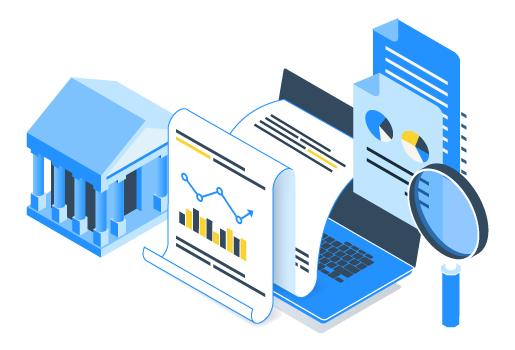Written by Landytech
21 Sep 2023As today’s UHNW become more geographically dispersed and family offices become more sophisticated in their investment functions and allocation strategies, portfolios now consist of multiple asset classes, custodians and currencies, and investments may be spread across various legal entities such as trusts, LLCs, foundations and personal accounts.
In this world of increasing complexity, family offices must grapple with vast quantities of disparate datasets to build a complete and accurate picture of overall wealth, portfolio performance, risk and exposure. For family offices to make informed investment decisions on such complex portfolios, timely, accurate and comprehensive reporting is critical. But creating this kind of rich, consolidated reporting can be a challenge when data is being sourced manually. It relies on family offices being able to source high-quality data, transform and store that data in a usable format, and enrich it with information from market and reference data vendors.
In an era where access to timely and accurate data is paramount, the inefficiencies and risks associated with manual data sourcing hinders the ability of family offices to make informed investment decisions and ensure wealth is preserved for future generations. Here we look at the sourcing options available to family offices and how they can build scalable data processes that will serve them long into the future.
Start by identifying the data you need
Effective data sourcing is the starting point for the journey towards consolidated reporting, but it’s difficult to achieve. Family offices manage complex, multi-asset-class portfolios, with fragmented data sources that comprise disparate, non-standardised data sets.
To create timely and accurate consolidated reports, family offices need to know:
- What assets and liabilities the family has
- The valuation of those assets and liabilities at a given point in time
- What transactions have occurred in the portfolios over a given time period
So, what are the different ways family offices can source this data?
The pitfalls of manual data sourcing
Currently, the most common method is an entirely manual process. With this process, an analyst or another member of the family office will access the family’s different banking portals to download the data in CSV, Excel, PDF or whatever format is available. In some cases, analysts are spending up to one week a month on data consolidation alone.
It is extremely time-consuming work as the data is held in a variety of portals, which have a multitude of different settings and are complex to navigate. This also introduces the significant risk of manual error.
Data timeliness can also be problematic. Often an investment manager or bank won’t make their report available until 15 days or more after month-end – especially in the case of non-liquid alternative investments.
Sourcing data for alternative investments and real assets is a similar story, where most data is still stored in various spreadsheets and file formats that require manual data entry into reporting systems.
Relationship managers are a stopgap solution
An alternative data sourcing option – at least for the custodied portfolios of a family office – is to obtain periodic reports from relationship managers. This is a less time-consuming and manually onerous task for the family office to perform. But there remains a significant risk of manual error and delay. The reports will usually be bank-branded PDF documents, making it painful for the family office to extract relevant information to use downstream. The family office will also need to manually consolidate the data in Excel or an equivalent application.
An automated future for data sourcing
.png?width=515&height=350&name=FO_playbook-featured-img-transparent_v02%20(1).png)
The optimal scenario for sourcing data is an automated process that uses data feeds set up with the family office’s custodian banks. Information can then be relayed directly via APIs, EBICS, SFTP or another protocol, depending on the counterparty. SFTP is the most common, but different protocols are favoured by different jurisdictions.
Automated data sourcing for custodied portfolios requires no manual intervention. It is also comprehensive, delivers data in a consistent format over time, and alleviates many of the security concerns around email data transfer. Automation also allows for daily data sourcing, enabling family offices to produce timelier, and more meaningful, reports. A daily process is almost impossible to sustain in a manual environment.
For non-custodied alternative investments and real assets, family offices need technology that can automatically digest, validate and extract the unstructured data of these various document types. This frees up staff that were previously burdened with manual data processes, to redirect their time towards higher value work.
Of course, automation does require significant technical capabilities to set up and maintain the data feeds. These resources can either be secured in-house or by working with a third party.
It’s time for action
The portfolios of modern-day families now span multiple asset classes, custodians and currencies, and are often spread across various legal entities.
Creating a complete picture of overall wealth, portfolio performance, risk and exposure with manually sourced data is a time-consuming and resource intensive process, which is also highly prone to error.
Automated data sourcing allows family offices to redeploy resources away from the burdensome task of data consolidation, freeing up more time for strategic work such as portfolio analysis, identifying new investment opportunities and succession planning.
To find out how technology can empower family offices to create a data-driven approach to investment management, read the Family Office Technology Playbook.
Related Content

The Top 10 Family Office Trends in 2024
To say the current economic environment is complex would be an understatement. With interest rates high and structural economic headwinds persisting, many economists believe we are in a “rolling recession” — a slow-growth period with industries...
-1.jpg)
5 ways to improve productivity in your family office
As family offices attempt to modernise, many are facing productivity challenges due to out-of-date, disparate internal systems andheavily manual processes. Naturally, there are inherent risks associated with such inefficiencies, including missed ...
/Blog%20and%20content%20images/Private-Asset-Reporting-Blog_v01.jpg)
The Top 5 Alternative Investment Reporting Challenges for Family Offices
For many years, alternative investments including private equity, hedge funds, real estate were seen as nothing but satellite allocations in the portfolios of asset owners. This made the job of family offices comparatively simpler when it came to...




